Odeon - Mecca
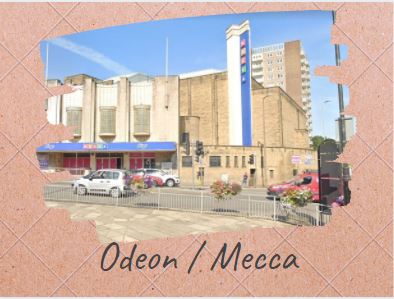
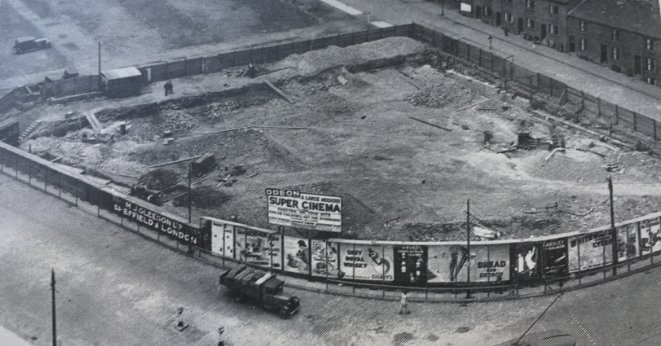
The Halifax Odeon opened on 27th June 1938 with Errol Flynn in “The Perfect Speciman”. It is bounded by Orange Street, Broad Street, and Great Albion Street. The architect was George Coles and it cost £59,727 to build. It had 1,344 stalls seats and 714 in the balcony giving a total of 2,058. A most unusual façade remains intact with three concave bays covered with buff faience tiles, above the entrance each containing a convex window. A tall Art Deco style tower formerly had the Odeon lettering illuminated by neon. It was however not originally intended for the Odeon circuit, but was a take over during construction, which explains its differences from the typical ‘Odeon’ style.
The cinema had a wide proscenium and a stylish interior with decoration dominated by two large bas-relief female figures on the splay walls either side of the screen (now removed). Lighting was entirely indirect.
The Odeon Cinema closed on 18th October 1975 with Robin Askwith in “Confessions of a Pop Performer”. It stood unused for a while. It was later converted into a Top Rank Bingo Club which is still operating as a Mecca Bingo Club today.
Thanks to Ian Grundy
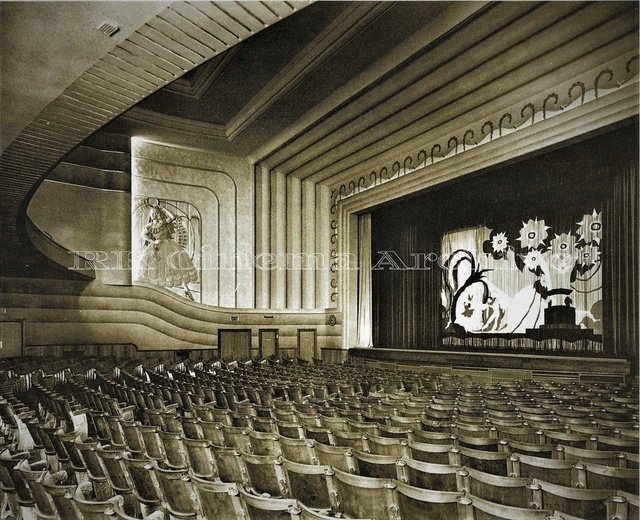
The cinema was built after the clearance of 'The City' and was opened by Mayor Frank Watkinson on 27th June 1938. It cost £59,727 to build. Capacity 2,058, of which 714 were in the circle.
The first film to be shown was The Perfect Specimen starring Errol Flynn and Joan Blondell. The Brighouse and Rastrick Band played during the interval.
The Odeon closed as a cinema on 18th October 1975.
The disused building was damaged by fire on 16th February 1976.
In 1977, it became a Top Rank Bingo Club, and is now a Mecca, and Halifax's only bingo club.
In May 2009, it was one of a number of local Art Deco buildings which were considered for listing.
Thanks to Malcolm Bull
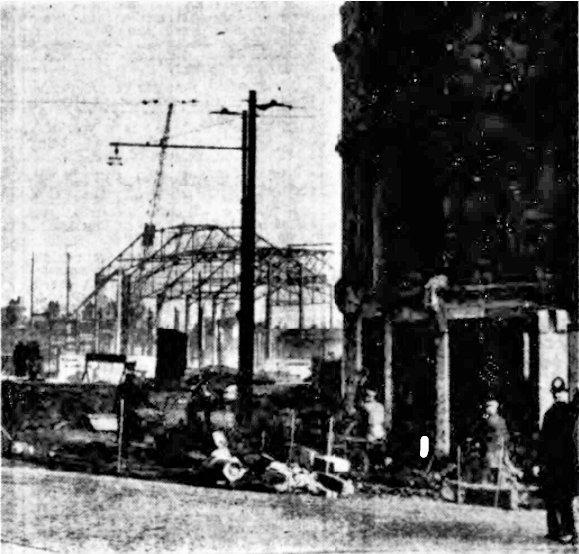 |
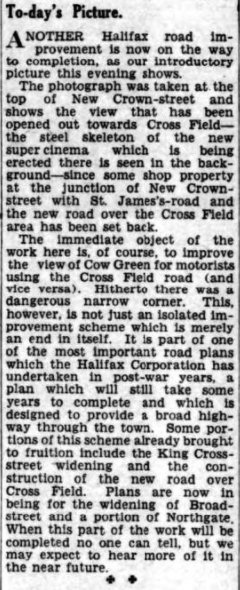 |
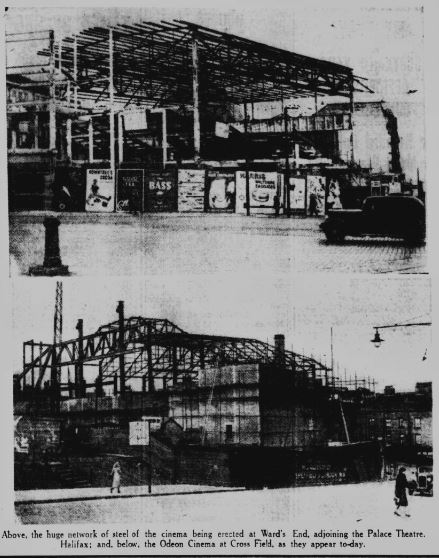
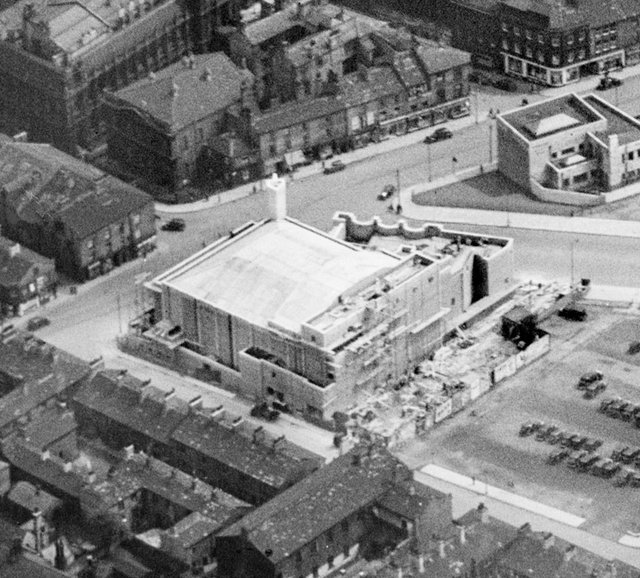
On June 27th 1938, the building that’s being constructed in this picture was finished and was opened to the public. It’s the Odeon Cinema in Broad Street.
The area around where the Odeon was built used to be known as ‘The City’ and this is a part of Halifax that’s altered several times over the years. Going back to the 1770s, the local cloth manufacturers decided they needed a cloth hall to sell the lengths of cloth that they wove in their own homes and this part of town was in serious consideration for the new hall. However, as we know, a site was chosen at the other end of town and in 1779, the Piece Hall as we now know it was opened.Subsequently this area was filled with small houses but as the 19th century progressed, they were not kept in good repair and by the early 20th century, The City was a crowded mass of back-to-back streets which housed the poorest people in the town.
In February 1926, because of the local anxieties about ill-health and epidemics in this overcrowded area, the Ministry of Health gave permission for whole area to be demolished and the work was carried out within a few months.The area then remained empty for over ten years although the Halifax Corporation did give consideration to building public swimming baths there in the early 1930s.
The area (or at least a corner of it) was then bought by an organisation founded and run by Birmingham-born, Oscar Deutsch, the son of a successful Hungarian scrap-metal dealer. He bought his first cinema in 1928 and by 1933 he already ran 26 cinemas.
Amazingly, by 1937, the Oscar Deutsch chain had expanded to 250 cinemas, all of them named ‘Odeon’. Deutsch’s publicists always insisted that the word ODEON stood for “Oscar Deutsch Entertains Our Nation” but actually the word had been used for many years for small cinemas before Mr Deutsch got involved with the industry in any way.
The cost of the cinema was almost £60,000 and the first film to be shown in the Halifax Odeon was ‘The Perfect Specimen’ starring Errol Flynn and Joan Blondell. The Brighouse & Rastrick Brass Band were engaged to play at the opening ceremony.
The second photo here shows the brand new Odeon looking perfect in every way.
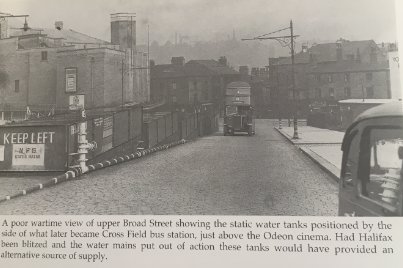
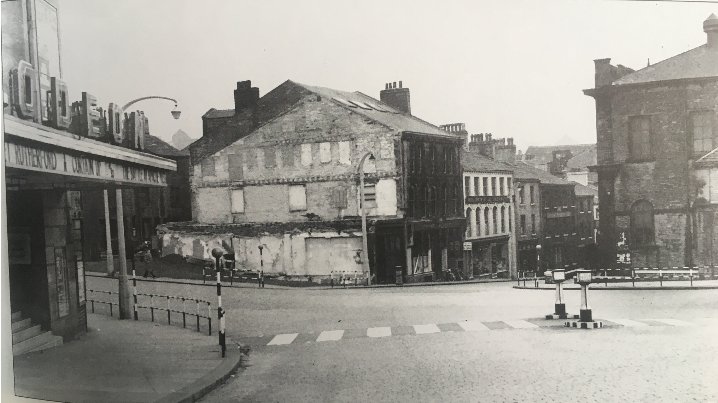

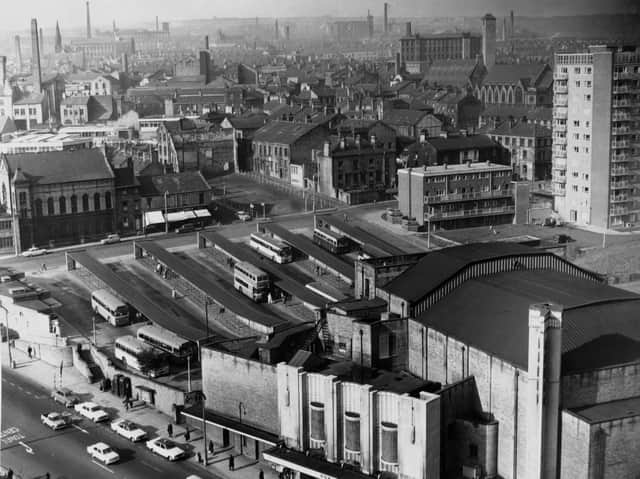
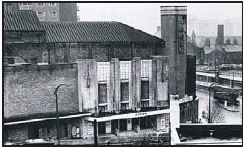
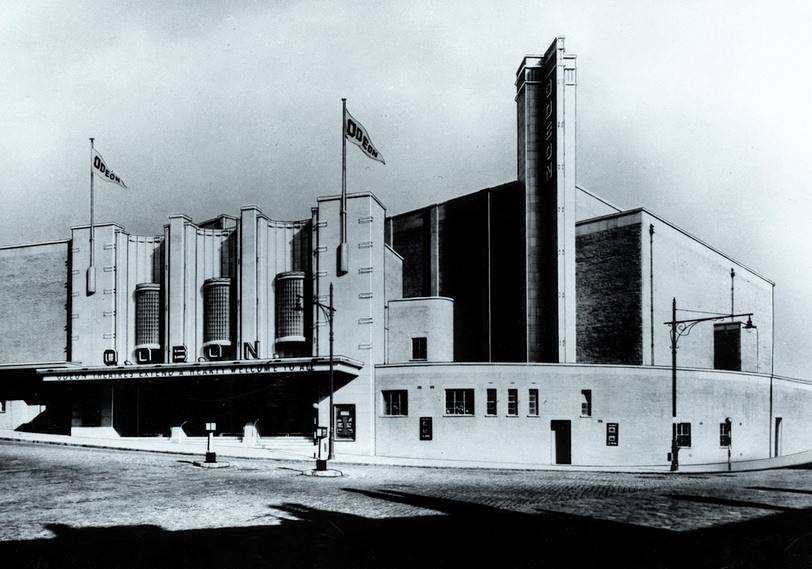
The Odeon lasted as a cinema until October 1975.
In later years it has been a Top Rank Social Club and is currently a Mecca bingo hall.The empty space behind the Odeon, used as a car park back then, became the Crossfield Bus Station, Halifax’s first ever purpose-built bus station.
One of the properties in Great Albion Street, behind the new cinema, where the Laura Mitchell Clinic was built in the late 1960s, was operated in the 1950s as the Police Boys’ Club. Its aim was to try and keep local rough youths, like me, on the straight and narrow by teaching them useful sports and pass-times. It was there that I learned I would never make a successful boxer!
Much of the information here is from Malcolm Bull’s Calderdale Companion website.
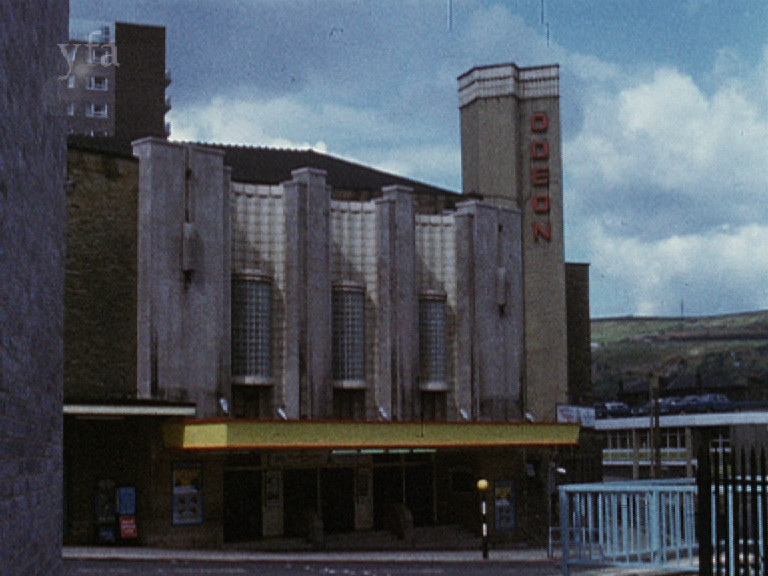
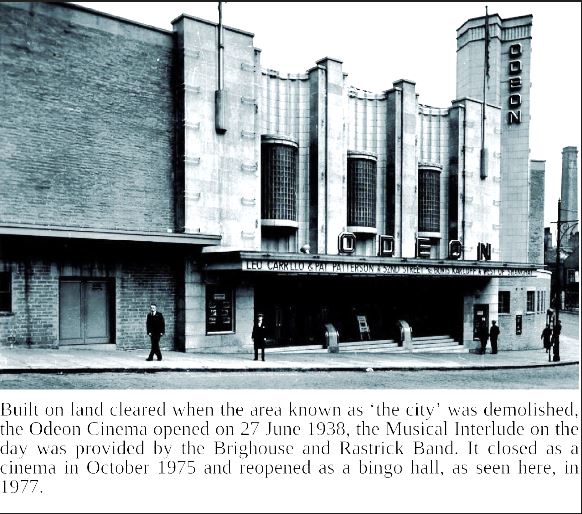
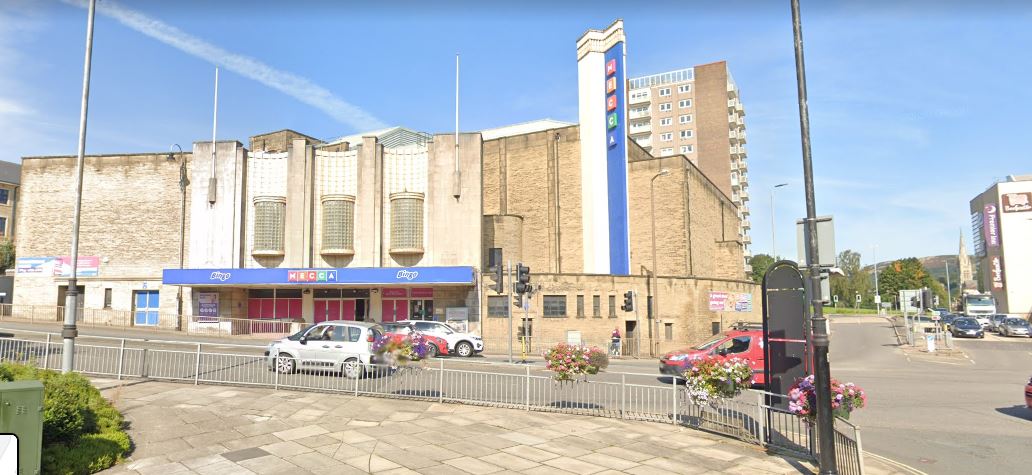
If you have enjoyed your visit to this website, please spread the word by clicking the 'like' and 'share' buttons below. Thank you


